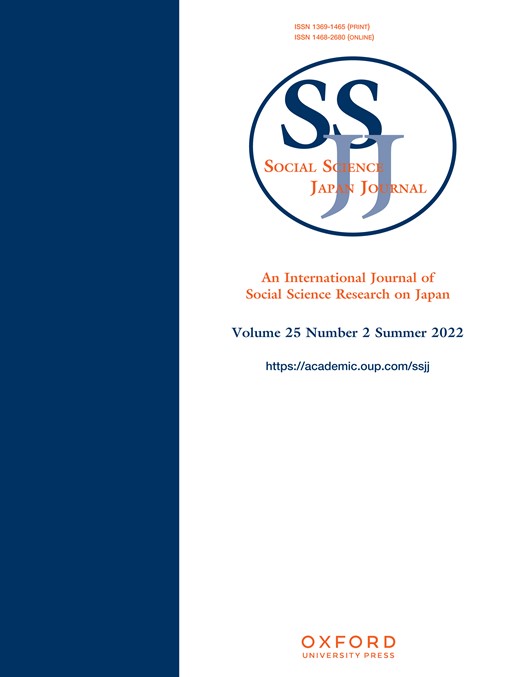-
Views
-
Cite
Cite
Helena HOF, Studying Japan: Handbook of Research Designs, Fieldwork and Methods, Social Science Japan Journal, Volume 25, Issue 2, Summer 2022, Pages 353–356, https://doi.org/10.1093/ssjj/jyac009
Close - Share Icon Share
Extract
This volume, edited by Nora Kottmann and Cornelia Reiher, is a much-needed addition to the bookshelf of anyone conducting qualitative research on or in Japan. My encounter with this comprehensive volume—which boasts 501 pages, 17 chapters, and more than 70 authors—has been from a rather uncommon angle: as a lecturer for an interdisciplinary master’s programme in Asian Studies, in which the familiar Japanese Studies students mingled with graduate students specializing on East Asia, South Asia, and the Middle East. The challenge to teach research designs and qualitative methods to such a diverse group was a formidable one, and despite Studying Japan’s seemingly exclusive focus on Japan, it was a helpful companion both to me and to the students—including those specializing on countries other than Japan. As Kottmann and Reiher state in the introduction, ‘one challenge for both Japanese Studies and Area Studies scholars has been the translation of methods developed in other disciplines (mostly in the West) to specific (often non-Western) field sites and research subjects’ (21). Many of the methodological problems junior scholars face are similar for both Japanese Studies and other Area Studies, and while country-specific advice and examples abound, the volume proves to be a helpful guidebook beyond the discipline of Japanese Studies.




